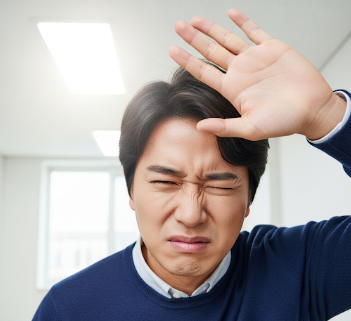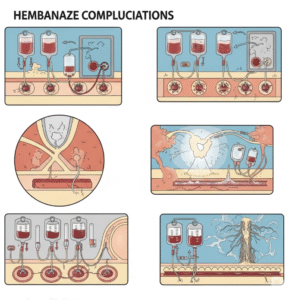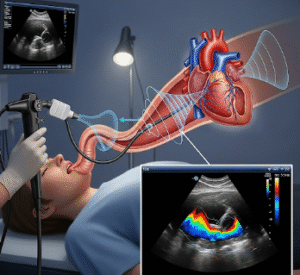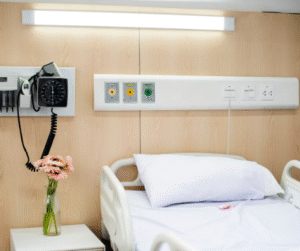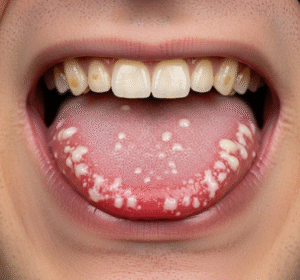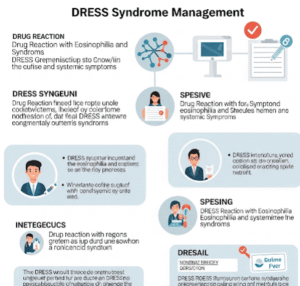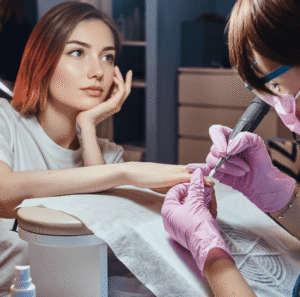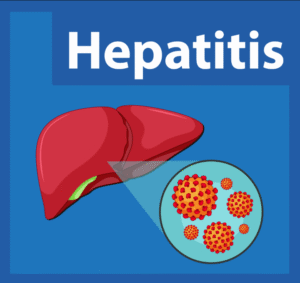Overview
Photophobia is a condition characterized by sensitivity or intolerance to light, where exposure to sunlight, bright indoor lighting, or electronic screens causes discomfort, pain, or the need to close the eyes. Despite the name, photophobia is not a fear of light; rather, it is a physical symptom often associated with eye or neurological disorders. Photophobia can affect one or both eyes and may significantly impact daily life, including reading, driving, or using digital devices.
➤ Photophobia may be mild, moderate, or severe, depending on the underlying cause.
➤ It can appear suddenly or develop gradually, and sometimes only in specific lighting conditions.
➤ Prompt recognition is important, as photophobia can indicate conditions ranging from dry eye to serious neurological disorders.
Korean ophthalmology and neurology clinics provide advanced diagnostics and targeted treatments for photophobia, combining modern imaging, medication, and lifestyle interventions.
Key Facts
➤ Photophobia is a symptom of light sensitivity, not a standalone disease.
➤ It may be accompanied by eye pain, tearing, or headaches.
➤ Causes can be ocular, neurological, systemic, or medication-related.
➤ Severity ranges from mild discomfort to disabling pain, affecting daily activities.
➤ Korea offers state-of-the-art eye care and neurology centers to evaluate and manage photophobia effectively.
What is Photophobia?
Photophobia refers to an abnormal sensitivity to light, causing discomfort, squinting, or avoidance behaviors. The condition occurs when the eyes, optic nerves, or brain process light abnormally, leading to a painful or uncomfortable response.
➤ Medical perspective: Photophobia is a symptom, often signaling underlying eye inflammation, retinal disorders, or neurological issues.
➤ Types of photophobia:
➤ Ocular photophobia – caused by eye conditions such as uveitis, corneal abrasions, or infections.
➤ Neurological photophobia – associated with migraines, meningitis, or brain injury.
➤ Medication-induced photophobia – a side effect of certain drugs like tetracyclines or antipsychotics.
➤ Appearance: Patients may experience pain, tearing, headaches, or eye squinting when exposed to light.
Understanding photophobia is crucial, as it can range from a temporary discomfort to a sign of serious underlying pathology.
What Symptoms Are Related To
Photophobia often occurs with other ocular or systemic symptoms, which help in identifying the root cause:
➤ Headaches or migraines – light sensitivity often precedes or accompanies migraines.
➤ Eye pain or redness – indicates inflammation or infection.
➤ Tearing and watery eyes – common in dry eye or ocular surface disorders.
➤ Blurred vision or halos – may accompany corneal problems or glaucoma.
➤ Nausea or dizziness – sometimes linked with migraine-related photophobia.
➤ Sensitivity to glare – particularly during outdoor activities or driving.
Recognizing associated symptoms is critical for differentiating between benign and serious causes.
What Causes / Possible Causes
Photophobia can result from a wide array of ocular, neurological, systemic, and external factors:
➤ Ocular causes:
➤ Dry eye syndrome – insufficient tear production causing irritation.
➤ Corneal abrasions or ulcers – damage to the eye surface triggers light sensitivity.
➤ Uveitis – inflammation of the uveal tract causing pain and photophobia.
➤ Conjunctivitis – infections or allergic reactions may cause light sensitivity.
➤ Cataracts or lens abnormalities – scatter light, causing discomfort.
➤ Neurological causes:
➤ Migraines – often accompanied by aura and severe light sensitivity.
➤ Meningitis – infections affecting the brain and meninges can trigger photophobia.
➤ Traumatic brain injury – damage to visual pathways may increase light sensitivity.
➤ Systemic causes:
➤ Autoimmune disorders – such as lupus or Sjögren’s syndrome.
➤ Medication side effects – certain antibiotics, antihistamines, or psychotropic drugs.
➤ Fatigue or stress – may exacerbate underlying sensitivity.
➤ Environmental factors:
➤ Exposure to bright sunlight or glare.
➤ Prolonged screen use without breaks.
Identifying the primary cause of photophobia is essential for providing effective and targeted treatment.
When Should I See My Doctor
Medical attention is necessary if photophobia is sudden, severe, or accompanied by other warning signs:
➤ Sudden onset with eye pain, redness, or visual changes, suggesting corneal or uveal pathology.
➤ Headache or neurological symptoms, such as nausea, vomiting, or weakness.
➤ Persistent photophobia affecting daily life or work.
➤ Associated with fever, neck stiffness, or systemic illness, which may indicate infection.
➤ History of eye injury or recent surgery, increasing the risk of complications.
Early evaluation by ophthalmologists or neurologists in Korea ensures prompt diagnosis, prevention of complications, and effective treatment.
Care and Treatment
Treatment focuses on relieving symptoms and addressing the underlying cause:
➤ Environmental adjustments:
➤ Wear sunglasses indoors and outdoors to reduce glare.
➤ Use anti-reflective screens and adjust lighting at home or work.
➤ Ocular treatments:
➤ Artificial tears or lubricating eye drops for dry eyes.
➤ Topical anti-inflammatory drops for uveitis or irritation.
➤ Treat underlying infections or injuries promptly.
➤ Neurological or systemic treatments:
➤ Migraine management with medications, hydration, and lifestyle changes.
➤ Address systemic or autoimmune conditions causing light sensitivity.
➤ Medication adjustments if drugs are triggering photophobia.
➤ Lifestyle modifications:
➤ Take frequent breaks from screens.
➤ Manage stress, fatigue, and sleep patterns.
➤ Maintain proper hydration and nutrition to support eye health.
➤ Monitoring: Regular eye exams and follow-up care ensure early detection of changes and effective long-term management.
Treatment Options in Korea
Korean medical centers offer comprehensive, cutting-edge care for photophobia:
➤ Ophthalmology clinics – advanced diagnostics including slit-lamp examination, retinal imaging, and corneal topography.
➤ Neurology departments – management of migraine-related photophobia and neurological disorders.
➤ Integrated care programs – combining eye care, neurology, and lifestyle counseling for chronic cases.
➤ Laser or surgical interventions – for corneal, lens, or retinal issues causing light sensitivity.
➤ Personalized rehabilitation and therapy – including tinted lenses, photophobia management strategies, and environmental adjustments.
➤ Follow-up and monitoring – ongoing evaluation to prevent recurrence or complications.
Patients in Korea benefit from highly skilled specialists, state-of-the-art facilities, and multidisciplinary approaches, ensuring effective treatment and improved quality of life for those suffering from photophobia.

